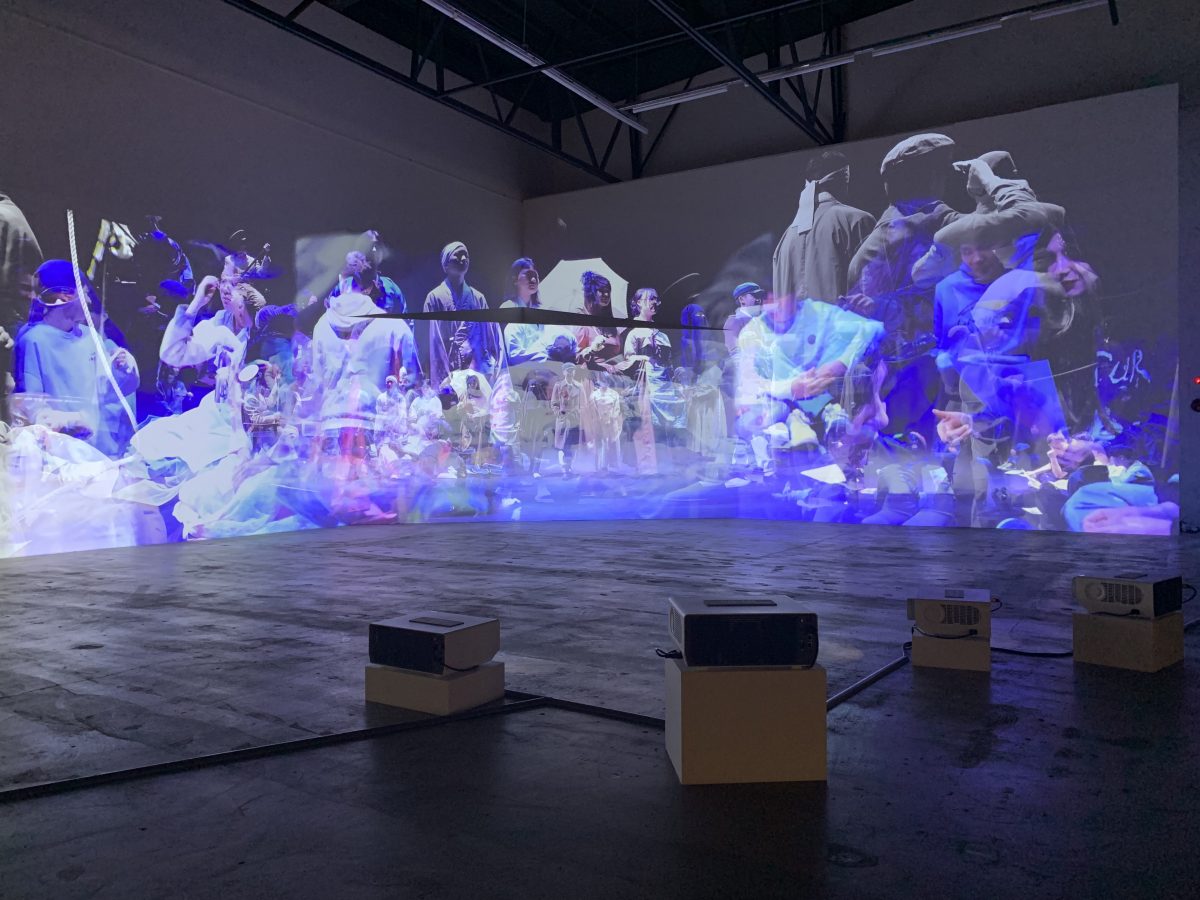The 14th Biennale of Contemporary Art titled “Soft and Weak like Water” opened in the South Korean city of Gwangju will conclude next month. We present the significant positions featured in the exhibition.
The name of the exhibition was inspired by a chapter of the Dao De Jing, which describes the fluid and adaptable nature of water, capable of accommodating any change, assuming any form, and even reconciling impossible contradictions to become an unstoppable force of transformation. This year, 79 artists from different generations and cultures, both from Korea and abroad, were invited to embody the spirit of the Gwangju Uprising and explore our planet as a site of resistance, solidarity, and mutual care. The exhibition consists of four sub-themes, which we will now examine in more detail.

Luminous Halo
This subsection positions the spirit of Gwangju as a source of inspiration and a model of resistance and solidarity. Drawing particular attention is the project by the Malaysian artist collective “Pangrok Sulap” (established in 2010) – a series of wood carvings titled “Gwangju Blooming” (2023), paying homage to the democratic movement of May 18th and the resilience of the human spirit. The portraits are visual reinterpretations of archival images of Gwangju residents that the artists encountered during their research. Through the act of collectively carving wooden letters, a traditional printing technique that has become somewhat outdated today, the artists inquire about how we can make the struggles of the past audible and visible in current struggles. The project serves as a reminder of the significance of collective action and the influence that art has on shaping our understanding of the world.

The artist Aliza Nisenbaum, born in Mexico and based in New York, lived in Gwangju in 2010 to work on her project “Someday in Spring.” This is a series of paintings created in collaboration with Shinmyeong, a theater troupe based in Gwangju. The Shinmyeong Theatre Company is known for its performances addressing social issues. Through her paintings, Nisenbaum captures the essence of the stories of the victims of the Gwangju Uprising and brings them to life. In addition to the paintings, an audio device hangs in the space, transmitting the voices of the artists during their performances. At the heart of this work are empathy and compassion, as well as the role that art can play in healing the wounds of the past.

Ancestral Voices
In this subsection, the focus is on transnational artistic approaches that invoke and reinvent traditions while challenging modernist ideas. The works of the Mataaho Collective explore themes such as cultural heritage, political power, and historical memory. Four Maori women share a common goal: to create works that represent the presence of their community. They employ regional weaving techniques and repurposed materials. The orange hue references Parawhenuamea, meaning “freshwater” in the Maori language, and its ever-changing body, which as a river, alters its color from the mountains to the sea. This color is also commonly associated with safety vests due to its strong signaling effect. The installation reminds us of the humble potential and strength of community.

Edgar Kalel’s practice is based on his life experience as a member of the Kaqchikel community, an indigenous community in present-day Guatemala. “The Echo of an Ancient Form of Knowledge” is an installation of fruits and vegetables placed on stones, which are offered to Kaqchikel ancestors. The fruits and vegetables are fresh and replaced every four weeks. The installation showcases the artist’s appreciation for his cultural heritage and the rituals he supports. On the wall hangs a paper drawing by him, depicting his grandmother’s house and evoking memories of his ancestors and his childhood.

Transient Sovereignty
The development of postcolonial and decolonial artistic thinking concerning topics such as migration and diaspora is the focus of this subsection. “Theatre of Life” is a video installation by Japanese artist Meiro Koizumi, which traces the history of the Koryo community (the Korean diaspora from Central Asia) in Gwangju.

The installation begins with photographic documents of the Korean theater founded in Kazakhstan in 1932, which played a significant role in shaping the identity of the Koryo throughout the 20th century. Koizumi invited 15 young people from the community in Gwangju to create a theater piece in a two-day workshop. These young individuals face difficulties in learning the Korean language and finding their place in Korean society. According to Russian avant-garde playwright and theorist Nikolai Evreinov, humans have a “theatrical instinct,” a natural human inclination to empathize and identify with others in a given situation. Drawing on Evreinov’s theory, the workshop aimed to help these young people find ways to actively transform their own identity against the backdrop of history. The resulting performance is presented in the form of a five-channel video projection.
Planetary Times
In this program, the works of Yuki Kihara attract attention as they explore the boundaries and possibilities of a “planetary vision” of environment and environmental justice.

Her work “A Song about Samoa – Moana”, exhibited at the Gwangju National Museum, is a series of Japanese kimonos made with handcrafted mulberry bark paper (Samoan siapo technique). Each garment features vibrant scenes, including expedition fleets, submarines, and underwater mining, attempting to assert their geopolitical dominance. Amidst the chaos, however, a Pacific double-hulled canoe sails using traditional navigation methods as a symbol of indigenous resilience and resistance against the exploitation of the Pacific, while foreign ships from the past and present constantly arrive to vie for dominance.

The largest biennial in Asia, currently running until July 9th, is a must-see event for all connoisseurs and lovers of contemporary art. Hurry and make sure to visit before it closes!



